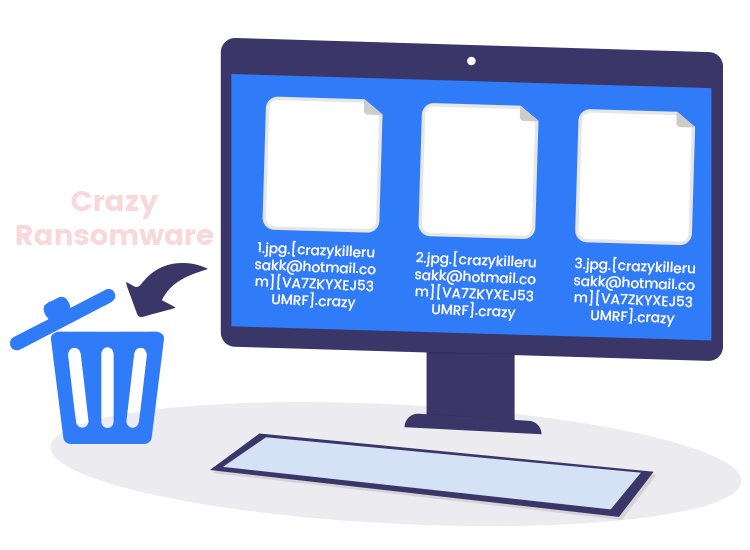
‘Crazy’ ransomware is a type of malicious software that is designed to encrypt all files on a targeted computer and ask for a ransom in the form of Bitcoin cryptocurrency to unlock those files. As reported by security researchers, this cryptovirus belongs to a well-known VoidCrypt ransomware family. If Crazy ransomware has already locked your data, then keep on reading to know how to remove it from your system and save your valuable files.
What is ‘Crazy’ Ransomware?
Like any other ransomware virus, ‘Crazy’ is designed by cybercriminals to encrypt every single data stored on the victim’s hard drive using asymmetric encryption techniques. The main purpose of this nasty program is to extract huge ransom money by holding your important files hostage.
After successfully invading the user’s system, this file-locking parasite appends the “.[crazykillerusakk@hotmail.com][unique victim ID].Crazy” extension at the end of all encrypted file names.
For instance, it renames a file named “1.mp3” to “1.mp3.[crazykillerusakk@hotmail.com][unique victim ID].Crazy”
Once all the commonly used files get encrypted, this ransomware-type program drops a ransom message (!INFO.HTA) and loads it on the victim’s desktop. Through this note, cybercriminals seek to inform their victims that the ransomware has successfully encrypted stored files and renamed their names with the .Crazy extension. It then prompts the victim for a ransom to be paid within 48 hours to decrypt the files, or they will be lost forever.
We strongly advise you to avoid paying up to cyber crooks because there’s no guarantee that they will actually release your encrypted files afterward.
How Does ‘Crazy’ Ransomware Infect Targeted Computers?
Below are the most common methods through which ransomware infection can get inside your computer.
- Malspam campaigns
- Fake software updating tools
- Third-party downloaders
- Dubious sites that contain a malicious script
- Adult content hosting websites
- Peer-to-Peer networks (e.g., torrent)
- Exploiting bugs and flaws of unpatched software
How to Protect Yourself against ‘Crazy’ Ransomware?
Follow the tips below to deal with a ransomware infection and mitigate the damage if you are attacked.
- Backup your valuable data and keep it safe. Creating backups won’t prevent ransomware, but it can reduce risk exposure.
- Use a dedicated antivirus/anti-malware software and keep it up to date.
- Practice safe surfing on the internet. Click with caution.
- Avoid using Wi-Fi hotspots in hotels, airports, libraries, coffee shops, and other public places.

